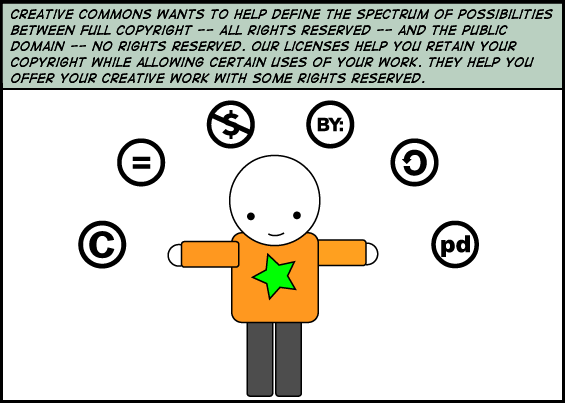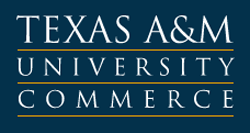Anyone making use of existing media must struggle with concerns about Creative Rights. We take great pains throughout to adhere to the best practices for Fair Use and Creative Rights, an issue as fundamental as it is complex. Because we are committed to providing access to all the source materials we used to create our remixes, the data source annotations provide complete information for every artifact we use throughout RRT. Not only does this information include complete titles and locations of artifacts, but also is followed with details concerning creative rights. Thus each image, video, or audio source will be followed by “Fair Use,” “Public Domain,” or “Creative Commons and a link to this page, where we explain what we mean by each term and offer resources concerning terms of (re)use.
RRT is, of course, a “start up project,” and our primary purpose is not to solve remaining issues about Creative Rights but instead draw from the many resources established by copyright and intellectual property lawyers like the Center for the Study of the Public Domain (Duke University School of Law), Creative Commons (Lessig), and Electronic Frontier Foundation. This issue by itself is sufficiently complex and controversial to require pages beyond what we can attend to in the current article. We could not solve these issues with this prototype, nor convince all readers that the issue no longer demands of us the regular debates it seems to attract. Nor could we table the issue of permissions, as it is of vital importance to anyone making use of materials created for other purposes.
Instead, we simply take as a given the important role played by doctrine of Fair Use, especially as copyright law (can) encourage creativity and especially as this particular treatment further establishes it as appropriately “Fair Use” in compliance with all four factors of section 107 of the Copyright Law. Where possible, we draw from materials in the Public Domain or holding Creative Commons licensing options that allow the uses we require. Where possible, materials we have created for this remix hold the CC licensing option Attribution-ShareAlike and are placed in the Northeast Texas Digital Collections housed at our university library for ease of (re)use (see McIntosh; Lessig; DeVoss and Ridolfo).
“Fair use is the section of copyright law that protects the rights of creators who want to incorporate other people’s copyrighted material into their work.” (Center for Social Media)
Fair use is “a tool is a tool to balance the rights of users with the rights of owners. . . Fair use is situational, and context is critical.” (NCTE, Code of Best Practices in Fair Use)
We take as a given the important role played by the doctrine of Fair Use, especially as copyright law (can) encourage creativity and especially as this particular treatment and the application of the Remixing Rural Texas (RRT) prototype to it further establishes it as appropriately “Fair Use” in compliance with all four factors of section 107 of the Copyright Law.
In reviewing the history of fair use litigation, we find that judges return again and again to two key questions:
- Did the unlicensed use "transform" the material taken from the copyrighted work by using it for a different purpose than that of the original, or did it just repeat the work for the same intent and value as the original?
- Was the material taken appropriate in kind and amount, considering the nature of the copyrighted work and of the use?
If the answers to these two questions are "yes," a court is likely to find a use fair. Because that is true, such a use is unlikely to be challenged in the first place.
National Council for Teachers of English, “Code of Best Practices in Fair Use for Media Literacy Education” (Adopted by NCTE Executive Council, November 2008)
Best Practices for Fair Use (from Center for Social Media)
Whenever possible, you should:
- Attribute where the clip came from (either on screen or in the credits)
- Try to take material from a range of sources not just one source
- Make sure you are using only as much as absolutely necessary to make your point
- Not include quoted material merely to avoid the cost or inconvenience of shooting equivalent footage. (Statement of Best Practices)
Additional Resources:
American University, Center for Social Media, “The Code of Best Practices in Fair Use for Media Literacy Education.”
Public domain refers to creative works for which copyright protection has expired, or, for pre-1978 works, works that lost copyright protection because of failure to comply with a legal formality (such as registration, or publication with a copyright notice). A public domain work may be used freely, in any form, without permission from the creator. Public domain works generally include those published before 1923, as well as works produced by the U.S. government (and certain other governments). It does not, however, include any and all creative works found on the Internet; just because creative works are easily accessible (i.e., downloadable from the Internet), does not mean they are public domain. (Digital Citizen)
Where possible, we draw from materials in the Public Doman or holding Creative Commons licensing options that allow the uses we require.
Additional Resources:
- Bound By Law: Tales from the Public Domain, Duke Law, Center for the Study of the Public Domain
- Peter B. Hirtle, Cornell University. “Copyright Term and the Public Domain in the United States” (1 Jan. 2012)
- “’Yes, you can!’—Where You Don’t Even Need ‘Fair Use’” (Peter Jaszi, Washington College of Law, American University, Center for Social Media)
 “The infrastructure we provide consists of a set of copyright licenses and tools that create a balance inside the traditional “all rights reserved” setting that copyright law creates.” (About Creative Commons)
“The infrastructure we provide consists of a set of copyright licenses and tools that create a balance inside the traditional “all rights reserved” setting that copyright law creates.” (About Creative Commons)
Copyright: All Rights Reserved
Creative Commons: Some Rights Reserved
Where possible, materials we have created for this remix hold the CC licensing option Attribution-ShareAlike.

From “Spectrum of Rights,” Creative Commons.



